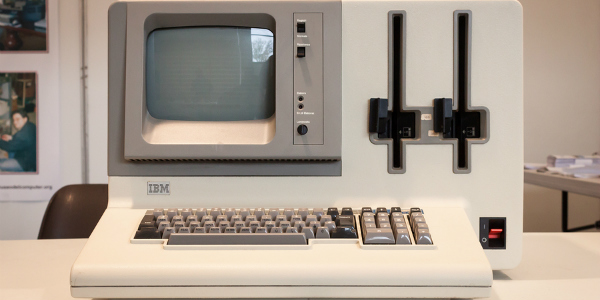Regulation and old technology are killing innovation in credit unions

Having spent a significant part of my adult life working with credit unions, I often wonder about innovation in credit unions. As essentially small businesses, Credit Unions should be on the forefront of innovation. They should have more ability to react quickly to members, more ability to leverage new technology, and more ability to think outside of the box. Unfortunately, I would argue there are two stiff head winds that stifle credit unions innovative capabilities.
The first involves the regulatory environment. Any heavily regulated industry by default stifles innovation. Let’s face it – innovation in Nuclear Power or the FAA is probably not a great thing. Without a lot of regulation slowing the innovation pace down, we could have new experiments with dire consequences. However, I believe Credit Union regulators are so focused on creating a zero risk environment that they are effectively going to regulate credit unions out of business. Every credit union executive likes to complain about this one – and I am not sure we can do much about it so I am going to focus on what we can do.
The second headwind involves the severe technology gap that exists in most credit unions. The gap is not in the technology capabilities but in the technical philosophy. This philosophy must be aligned from the board down to the member. Just as fraud mitigation and policy is only as effective as the weakest link – innovation and technology adoption can also be limited by the lowest common denominator. The business cycle is faster than ever and continuing to speed up and almost every new innovation in financial services has technology behind it.
So how can credit unions overcome the headwinds and begin capitalizing on the inherent strength of the industry?
Credit Unions need to be hiring, screening, adjusting and positioning themselves to move faster, change quicker, and adopt technology quicker. In most small businesses the entrepreneur’s fate is based on their ability to react quickly – this is largely caused by the leveraged and undercapitalized nature of new businesses. It creates lean, hungry and forced innovation that occurs faster and without the friction that exists in credit unions. Credit Unions are in an enviable spot compared to most small businesses. They have lots and lots of capital and with regulation – very little leverage on their balance sheets comparatively. Unfortunately though – this seems to also impact credit unions leverage in other ways in the organization. Technology committees and RFP’s where you get three solution proposals does not lead to innovation. Innovation is more like a kid learning walk, quick, experimental, sometimes fails miserably, but tries over and over again building on small successes. Ultimately, I don’t think everyone in the organization needs to be innovative – but everyone needs to be supportive of it and excited by it and ready to embrace it when it is ready.
To innovate in credit unions, we need to create leverage where we can. To do so, we must exploit the very values on which the credit union movement was founded upon – mostly the willing collaboration between credit unions. Within individual credit unions, leverage must be adopted in the business cycle, performance targets, pace of change etc. One if the biggest impacts can be in staff alignment, profiles and your team’s ability to digest change. Consider this, if the credit union no longer had to spend cycles on training for every new release and version and instead, end users naturally craved the new features, educated themselves, and pushed IT for faster progress – the whole credit union would move quicker. Cultural change of everyone moving forward together is described here. I don’t’ think it happens just on change, it happens on passion and clarity of vision on the reason for moving forward and seeing a clear path the organization is taking to get there.
The quicker we can adopt the change, understand the future, understand our newer – younger members, and become relevant to them – the more assured we will be of a future. A great analogy I recently heard involves thinking about dropping 100 marbles over a bathtub. While it appears risky to bet on individual marbles, in reality they will all end at the drain. If you can focus on the drain, which is essentially where the market is going to be, and innovate and change to get to that point – the market will eventually come to you. The trick is not to innovate to today’s problems but to anticipate the change. How can credit unions plan for the way technology will change the interaction with members?
CU’s obviously know how measure and monitor credit risk.. If you provide investment services group you probably create risk profiles and investor profiles for your members. What is your CU’s risk tolerance? What is your risk profile for tackling innovative ideas, services, and new business lines? How mature are your tools around evaluating new technologies and new innovation compared to your financial underwriting and lending risk assessments? These tools don’t just evaluate the opportunity, they often focus the vision and align the team seeking the path forward on what the innovation and change could mean for members and the CU.
Credit Unions today need to think about innovation in terms of where the market will be in 5 or 10 years. They should focus less in terms of small incremental changes…electronic documents vs. paper, mobile banking vs. online banking. Instead think about how demographic trends are impacting your younger members? Are they driving less? Are they waiting longer to have children? Are they less concerned about privacy? What drives their relationship with consumer businesses? Will they define a relationship as a teller that knows their name? There are probably a few innovative opportunities around these changes that make credit unions more relevant to their members.
After determining where the future will be – start working to get there in every aspect of the business. Focus on your service, people, systems, technology and most importantly your brand. Your brand needs to establish trust, be transparent, be personal, and be fast. This will probably require rethinking much of your service interactions while simultaneously should not impact your underwriting criteria. Ultimately, the innovation that should be occurring in credit unions should be in service, delivery, data analytics, and technology. The innovation will also need to come from innovators – people who are encouraged to try new things, experiment, and fail quickly, learn from it, and try again.





